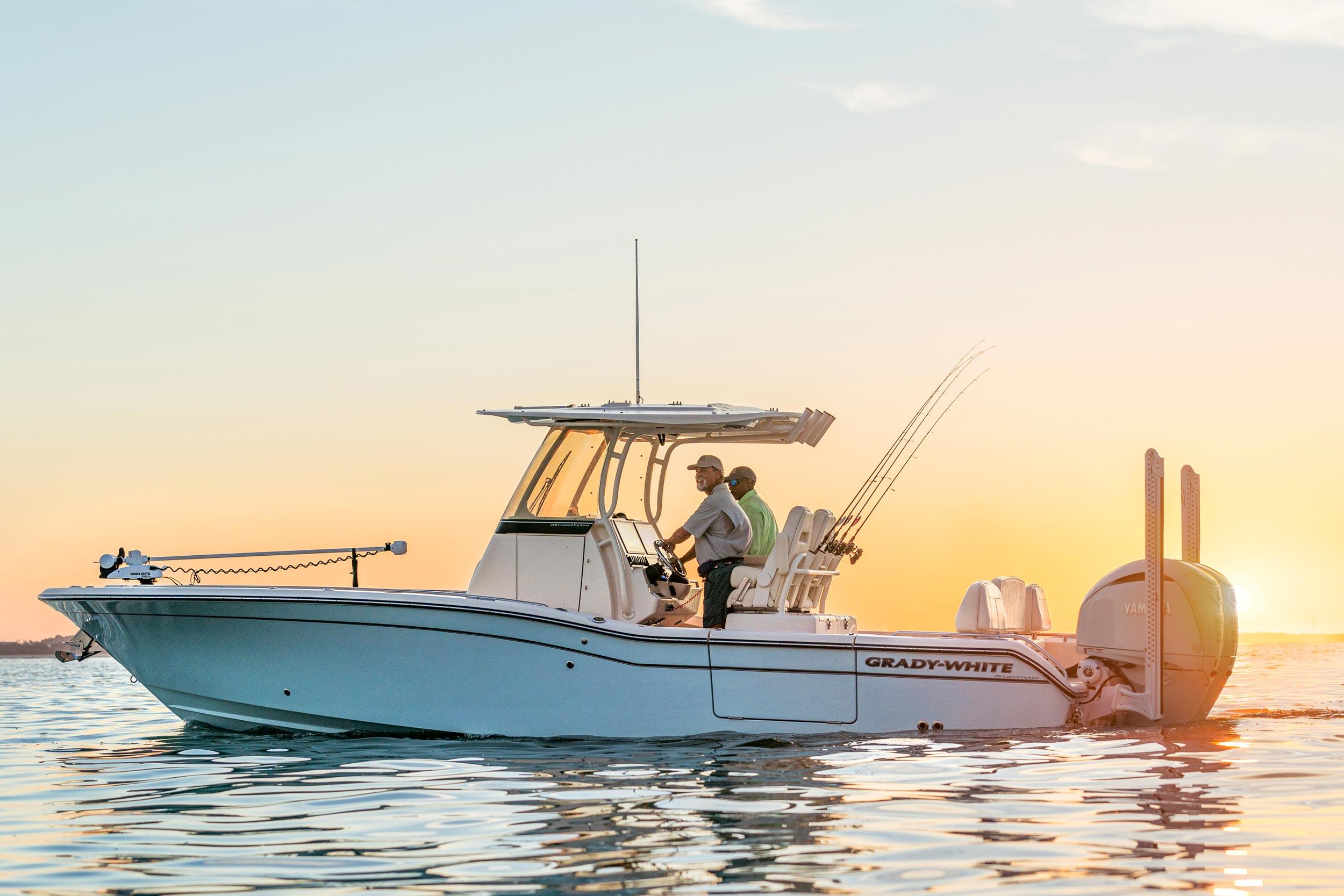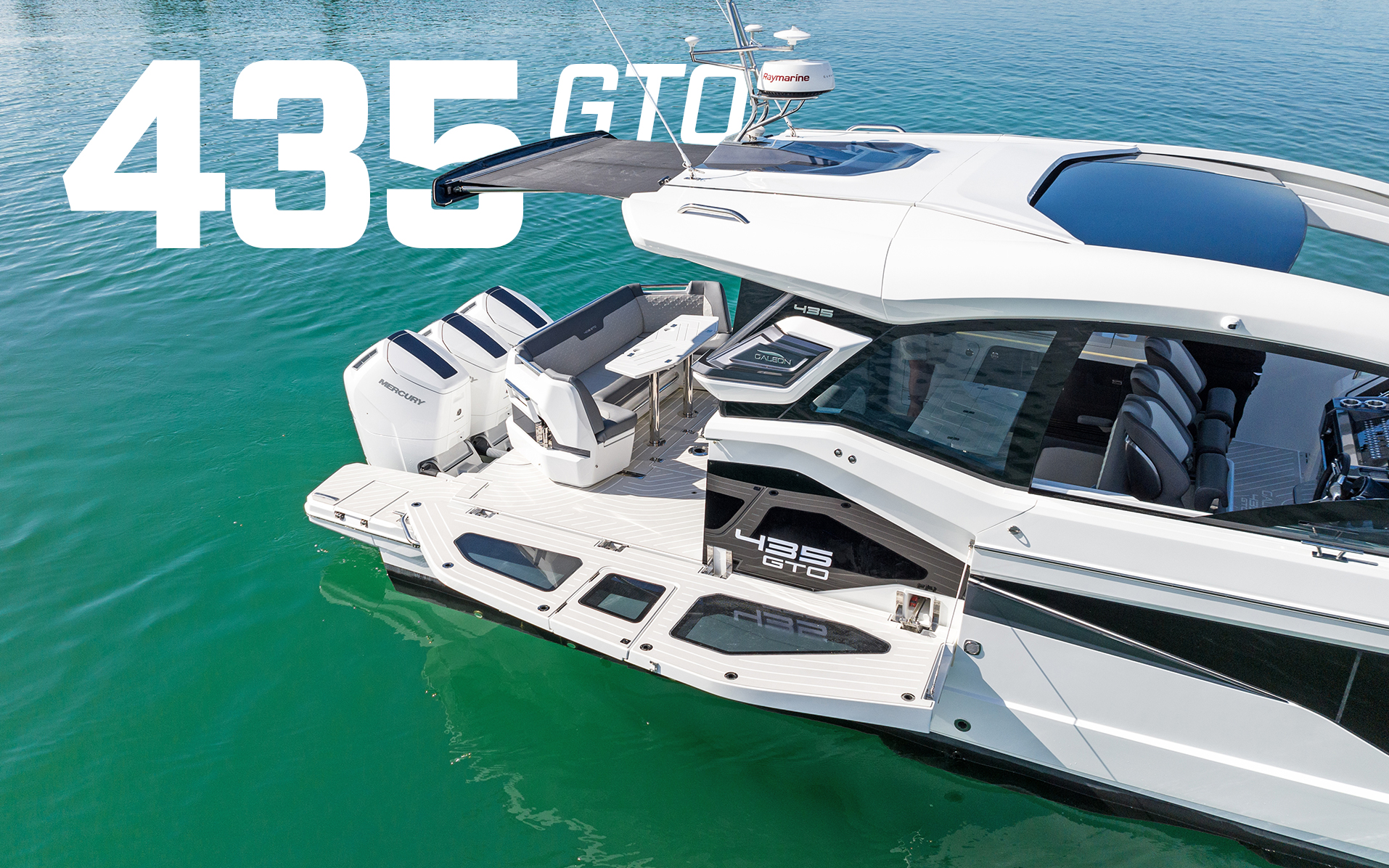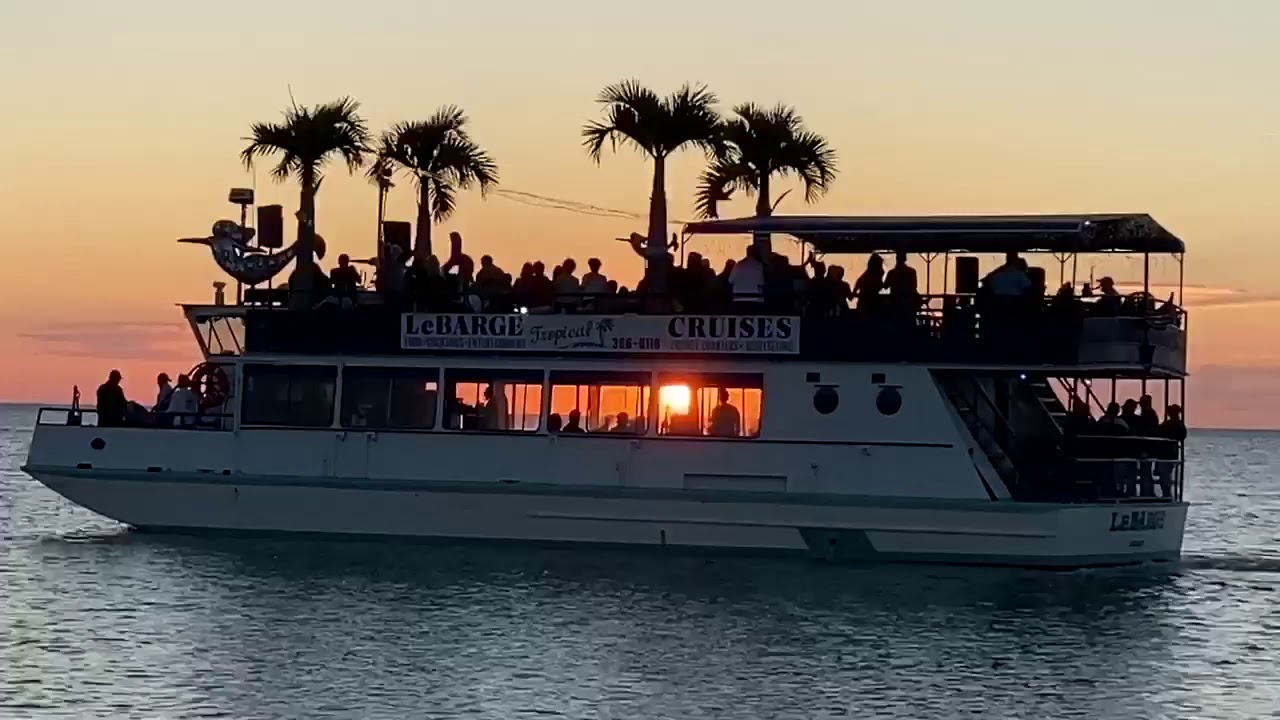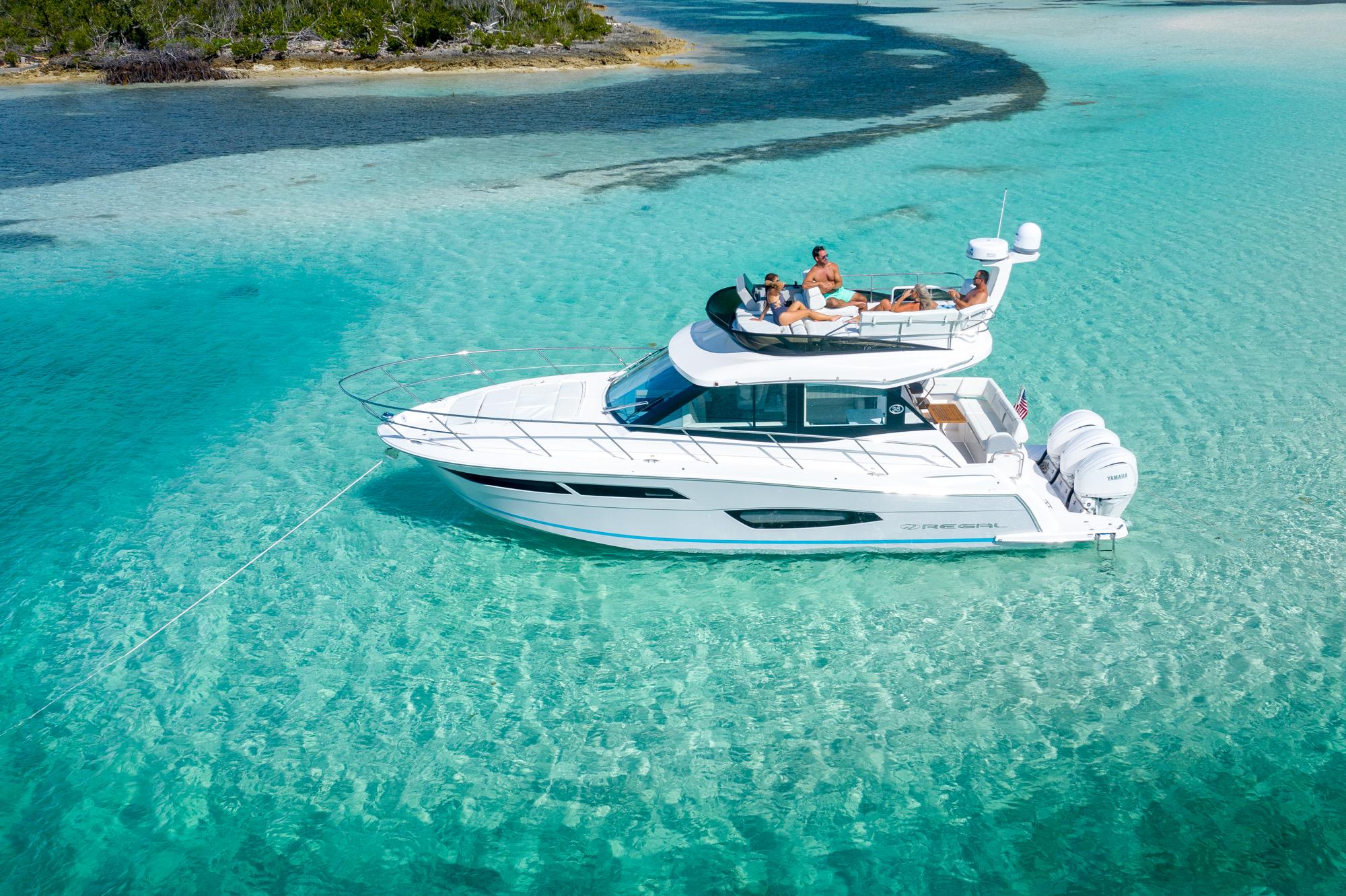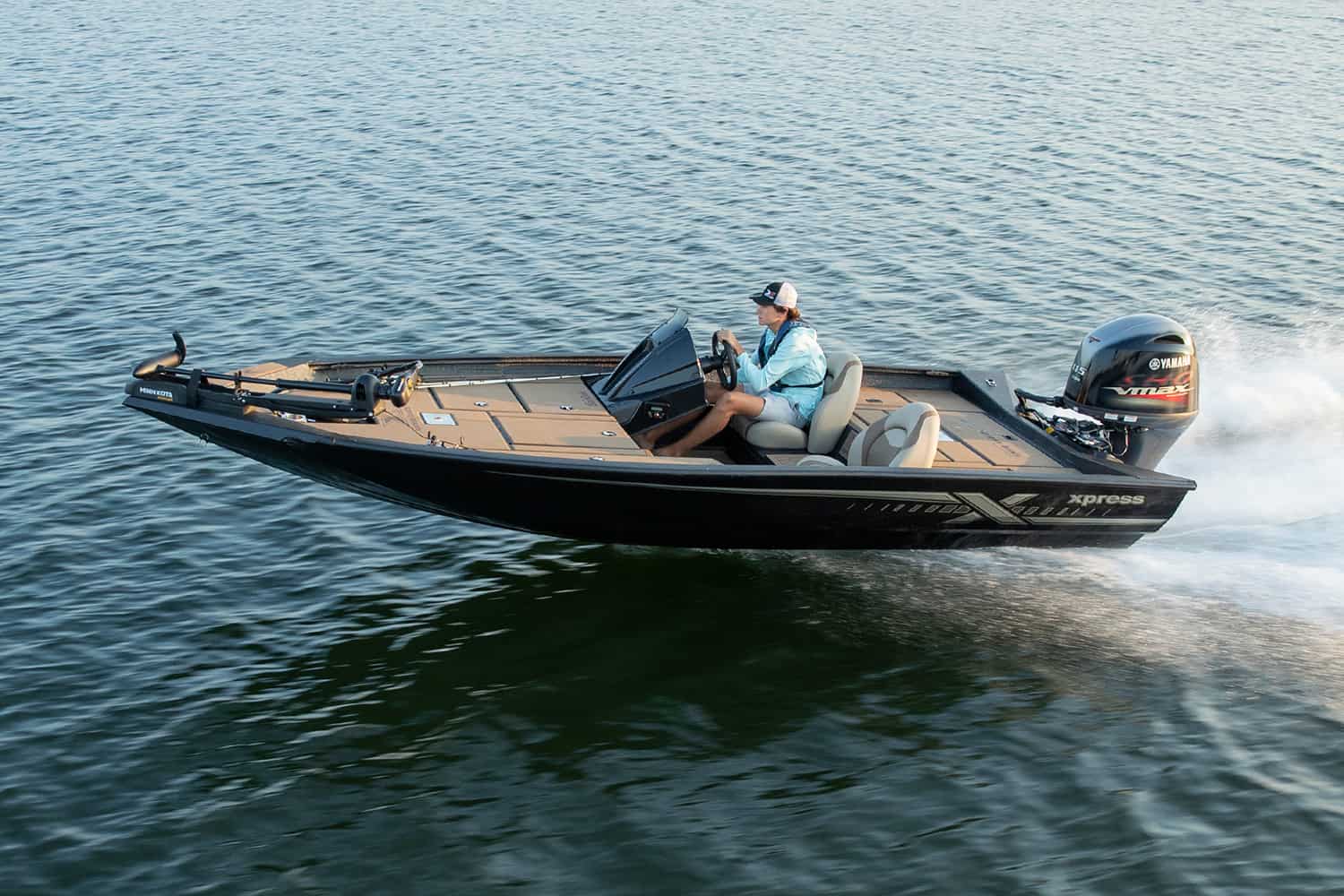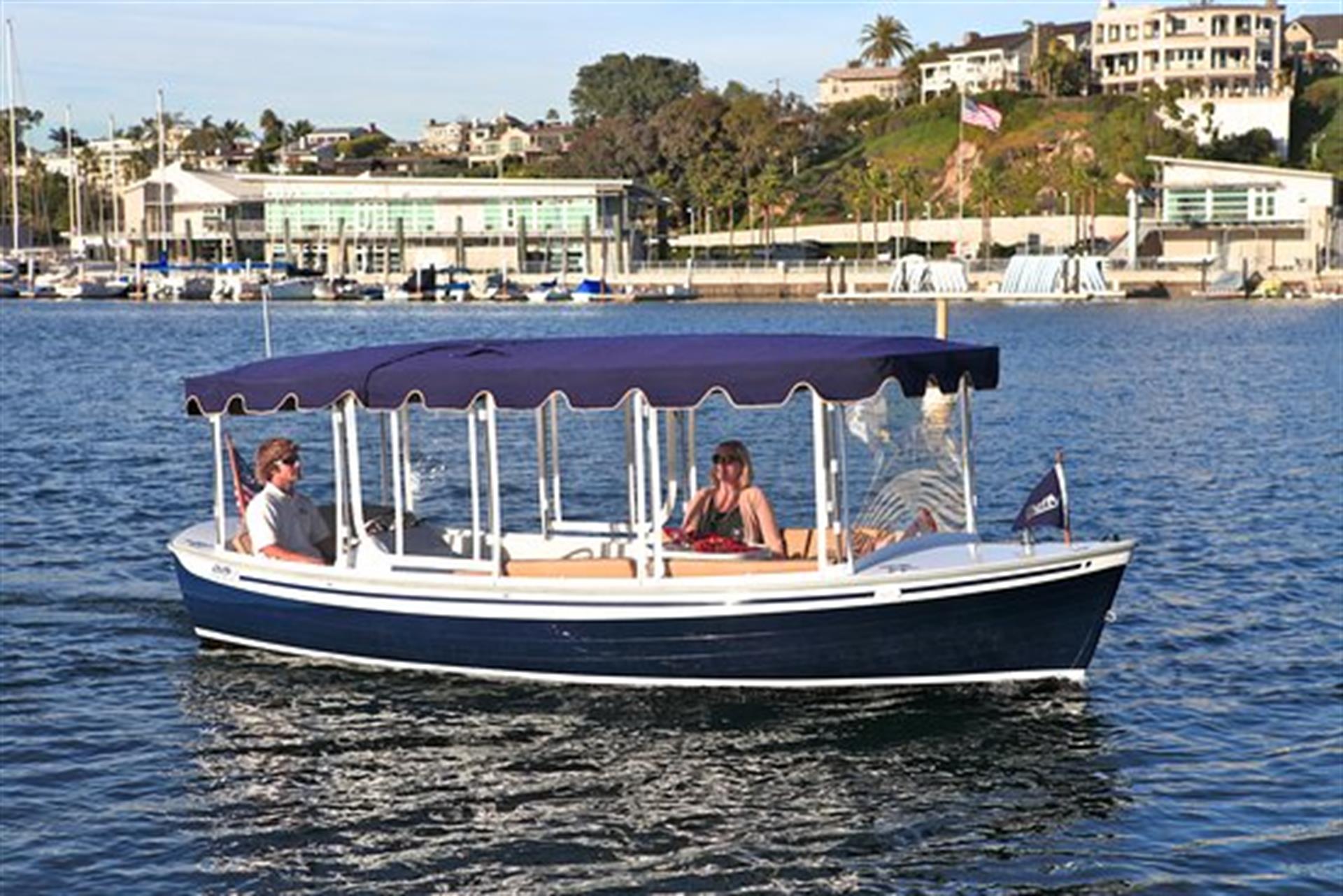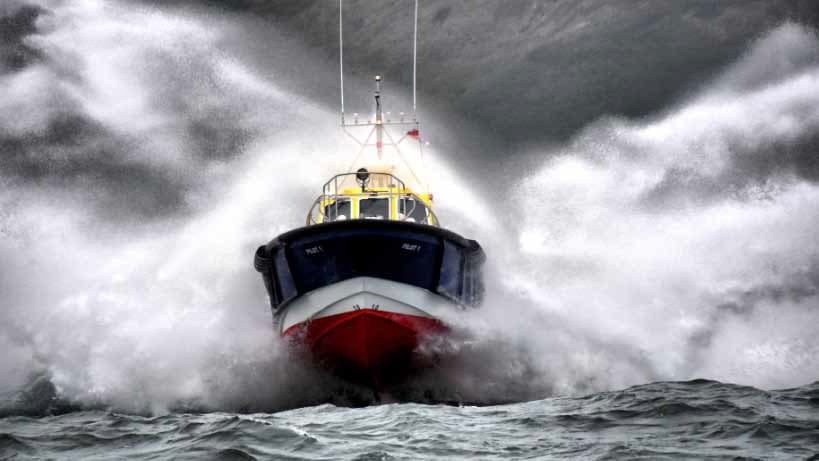Boat Anchor Essentials: Choosing the Right One for Your Vessel
Boat anchors play a crucial role in ensuring the safety and stability of your vessel when you need to stop and stay in position on the water.
Selecting the right anchor for your boat is essential, as it can significantly impact your boating experience and the security of your watercraft.
With a variety of anchor types, materials, and sizes available, understanding the fundamentals of boat anchoring will help you make an informed decision and improve your overall boating safety.
From traditional fluke and plow designs to modern claw and mushroom anchors, different styles of boat anchors offer unique advantages, suited for various water conditions and seabed types.
Along with anchor style, factors such as the anchor's material, weight, and sizing should be considered to ensure optimal performance.
Additionally, it's essential to become familiar with anchor rode, accessories, and proper deployment and retrieval techniques to ensure secure and efficient anchoring.
Key Takeaways
- Boat anchors are vital for safety and stability, with various types suited to different conditions.
- Anchor material, weight, and size should be considered alongside the anchor type for optimal performance.
- Understanding anchor deployment and retrieval techniques is crucial for effective and secure boat anchoring.
Types of Boat Anchors
Fluke Anchor
The Fluke anchor is an ideal choice for small to mid-sized boats and is suitable for lakes, rivers, mud, and sand.
Often referred to as a Danforth anchor, it features a forward-heavy profile, allowing the flukes to penetrate into the soft bottoms effectively. The rotating bar between the anchor and the line swivels into a horizontal position, providing good scope and holding power.
Plow Anchor
Plow anchors are designed for medium to large-sized boats, offering consistent performance in a range of bottom types.
Popular plow anchor styles include the CQR (secure) and Delta anchors. The CQR pivot design allows it to change direction with the boat while remaining buried. On the other hand, the Delta anchor boasts an efficient holding power, about 50% more than the Bruce anchor.
Recommended Weight of Plow Anchors per Boat Length:
| Boat Length (in ft.) | Recommended Anchor Weight (in lbs.) |
|---|---|
| 22-26 | 26 |
| 27-32 | 35 |
| 33-50 | 45 |
| 51-65 | 60 |
Claw Anchor
The Claw anchor, also known as a Bruce anchor, is suitable for boats up to 60 feet in length.
It resembles the plow anchor, but with a broader scoop section and three teeth or claws. The claw anchor is known for its ability to dig into the soft bottoms, including mud, rock, and coral, providing reliable holding power. However, it is less efficient in loose seabeds like sand.
Mushroom Anchor
Mushroom anchors are specifically designed for boats navigating in soft bottoms like mud or silt.
These anchors have a disc-like shape that sinks into the soft substrate, creating suction to hold the boat in place. Due to their low holding power, mushroom anchors are ideal for small boats with a shorter length.
Other Anchor Types
There are other specialized anchor types, such as the scoop anchor and wing anchor, like the Fortress anchor.
The scoop anchor is known for its high holding power and ability to reset itself quickly in shifting seabeds.
The wing anchor, on the other hand, features a lightweight design with wide flukes that dig into the soft bottom efficiently, providing excellent holding power.
Anchor Materials
Galvanized Steel
Galvanized steel is a popular and widely used material for boat anchors due to its cost-effectiveness and corrosion resistance.
This material is made by applying a protective zinc coating to the steel, which helps prevent rust and corrosion. The durability of galvanized steel anchors makes them ideal for use in various marine environments. However, it is important to note that over time, the zinc coating can wear off, exposing the steel to the elements and leading to rusting. Regular inspections and maintenance are necessary to prolong the life of a galvanized steel anchor.
Stainless Steel
Stainless steel is another common material for boat anchors, known for its high corrosion resistance and sleek appearance.
Since stainless steel contains chromium, it forms a protective oxide layer that prevents rusting, making it significantly more resistant to corrosion compared to galvanized steel.
This material is also known for its strength and durability, although it tends to be more expensive than galvanized steel. When choosing a stainless steel anchor, it is essential to consider the grade of stainless steel used, as different grades offer varying levels of corrosion resistance and strength.
Nylon and Other Materials
In addition to steel, various alternative materials are used in boat anchor production.
Nylon, for example, is a lightweight and flexible option suited for certain anchoring situations. While nylon anchors may not offer the same level of strength and durability as steel anchors, they can be easier to handle and less likely to damage a boat's hull.
Other materials such as aluminum and high-tensile steel are also used to produce boat anchors.
Aluminum anchors are typically lighter than their steel counterparts and offer decent corrosion resistance, making them a popular choice for smaller boats and specific anchor types.
High-tensile steel, on the other hand, is known for its exceptional strength, enhanced by a heat treatment process. This material offers increased durability and better anchoring performance but can be more expensive compared to mild or galvanized steel.
Sizing and Weight
Determining the Right Size
Determining the right anchor size and weight for your boat is crucial for safe and efficient anchoring.
Several factors, such as boat size and environmental conditions, come into play when selecting the appropriate anchor.
A common rule of thumb is to use 1 lb of anchor for each foot of the boat^1^. For instance, a 30-foot boat should use a 30 lb anchor.
Boat size is not the only factor to consider; weight also plays a role in anchor sizing. If a boat is heavy, it requires more holding power from the anchor^2^.
Remember to consult your boat's manufacturer specifications to ensure you are selecting the right anchor size based on both length and weight.
Heavy vs. Lightweight Anchors
Heavy anchors usually provide more holding power and are better suited for larger vessels or challenging anchoring conditions.
On the other hand, lightweight anchors can be easier to handle and are ideal for smaller boats or less demanding situations.
Here are some comparisons between heavy and lightweight anchors:
- Heavy anchors:
- Pros: Higher holding power, suitable for larger boats or heavy currents, work better in rocky bottoms and debris fields^3^
- Cons: More cumbersome to handle, may require additional equipment (such as a windlass)
- Lightweight anchors:
- Pros: Easier to handle and store, work well with smaller boats or less demanding environments, often less expensive
- Cons: Limited holding power, may not be suitable for heavy currents or challenging bottoms
Anchor Rode and Accessories
Chain and Rope
When selecting the appropriate anchor rode, it's essential to consider the combination of chain and rope.
An ideal anchor rode consists of a length of chain connected to the anchor and a longer length of rope spliced to the chain's other end.
The chain provides weight and strength, while the rope allows flexibility and shock absorption.
Generally, a boat should have 8 feet of rope for every 1 foot of water they will be anchoring in and 1/8" of rope diameter for every 9' of boat.
Some popular ropes for anchor rode are made of nylon due to its excellent strength, stretch, and resistance to the marine environment.
Common options for chain include galvanized steel and stainless steel, both of which offer corrosion resistance and durability.
Windlass and Rollers
A windlass is a mechanical device used to manage the anchor rode, making it easier to raise or lower the anchor.
Windlasses can be manually or electrically operated, and they work with both chain and rope combinations.
When selecting a windlass, be sure it's compatible with the size and type of your anchor rode.
One essential accessory to consider is a bow roller, which helps guide the anchor rode smoothly over the bow when raising or lowering the anchor.
It prevents damage to the boat's hull and makes the anchoring process more seamless. Ensure the bow roller is compatible with the dimensions and weight of both your anchor and windlass.
Cleats and Chafing Gear
Securing the anchor rode is crucial, and cleats play a vital role in this process. They are used to secure the rope end of the anchor rode to the boat, offering a strong and reliable attachment point.
Make sure the cleat is sturdy and appropriately sized for the diameter of your rope.
When the rope is under tension, chafing can occur at points where it makes contact with the boat or any hardware. To minimize wear on the rope, use chafing gear such as reinforced tubing or chafe guards.
Chafing gear is a worthwhile investment as it prolongs the life of your anchor rode and reduces the risk of failure due to damaged rope in critical situations.
Anchor Deployment and Retrieval
Setting the Anchor
When anchoring a boat, selecting the right anchorage is crucial for safety and stability.
Ideally, choose an area with good holding power, such as sand or mud, as anchors are more easily set and hold well on these types of seabeds. Avoid areas with rocks, grass, clay, or coral, as these surfaces have lower holding power and may damage the anchor.
To set the anchor, first determine the depth of the water so that the appropriate length of rope, also called the rode, can be used.
A general rule of thumb is to use a ratio of 5:1 or 7:1 for the length of rode to the depth of the water. This allows for enough scope to handle changes in current, wind, and tide.
- Lower the anchor slowly while keeping the rode slack to ensure it hits the bottom at the intended spot.
- Gradually back up the boat as you slowly pay out the rode.
- Once the appropriate scope is reached, gently set the anchor by putting the boat in reverse.
- Ensure the anchor is holding by checking for any movement or slipping of the anchor.
Retrieving Techniques
When it's time to retrieve the anchor, there are a few techniques to follow for a safe and efficient operation:
- Position the boat directly above the anchor and cleat the anchor line at the bow.
- Gently idle the boat in the direction of the current or wind to apply force on the anchor rode. This should pull the anchor in the opposite direction of its initial set and can help free it from the bottom.
- To learn more, read this article on anchor retrieval.
- If the anchor is stuck, consider using an anchor retrieval ring and buoy as an alternative method.
- While retrieving the anchor, keep an eye on the rode to make sure it is not getting caught on any underwater obstacles or obstacles on the boat.
Understanding Anchor Performance
Holding Power and Conditions
The performance of an anchor is largely influenced by its holding power, which varies depending on the anchor type and bottom conditions.
Certain anchor designs are more suitable for specific bottom conditions. For example, fluke anchors are effective in sand and mud, while plow anchors perform better in rocks and grassy bottoms.
The anchor's ability to resist movement and maintain its position is known as its resistance. This is an essential factor for secure anchorage, as the resistance determines the boat's stability in various environmental conditions, such as waves, wind, and current.
Scope and the Role of Wind and Current
The scope of an anchor refers to the ratio of the anchor rode's length to the water's depth.
This ratio influences the anchor's performance significantly, with a higher scope ratio generally providing better holding power. A common rule of thumb is to use a 7:1 scope, which means that for every 1 unit of water depth, 7 units of rode should be let out.
Wind and current play crucial roles in anchor performance.
As the wind speed doubles, the holding requirement quadruples. Hence, it is necessary to select an anchor with the appropriate holding power necessary for the conditions in which the boat will be anchored.
Hull height can also impact the anchor's performance, as taller hulls are more affected by wind, causing greater forces on the anchor. This results in a greater need for resistance to keep the boat securely anchored.
To help you better understand how different factors affect the anchor performance, the following table provides a brief overview:
| Factor | Description | Impact on Anchor Performance |
|---|---|---|
| Bottom Conditions | Type of seabed (mud, sand, rocks, etc.) | Determines the suitability of anchor types and affects the holding power and resistance against movement |
| Holding Power | Anchor's ability to maintain its position | Influenced by anchor design, bottom conditions, and rode scope ratio |
| Scope | Ratio of rode length to water depth | Higher scope ratios generally provide better holding power, with 7:1 being a common recommendation |
| Wind and Current | Movement of air and water around the boat | Increases the forces on the anchor, requiring greater holding power and resistance, especially as wind speed doubles |
Boat Anchoring Strategies
Single vs. Multiple Anchors
When anchoring a boat, it's important to consider whether to use a single anchor or multiple anchors.
A single anchor is the most common method, typically deployed from the bow of the boat. This approach is generally sufficient for most situations, as the bow is designed to cut through waves and provides the most seaworthy end of the boat1.
However, using two anchors can provide additional stability.
This technique is particularly useful when dealing with strong tidal currents or windage. Two anchors can be set in a V-formation, with each anchor placed at a 45-degree angle off the bow, or in tandem, with one anchor providing additional security behind the primary anchor.
Anchoring in Different Environments
River: Anchoring in a river requires special consideration due to its strong currents. A heavier anchor with adequate anchor rode length is recommended.
To ensure a secure hold, aim for a scope ratio of 7:1. This means seven times the depth of the water plus the height of the bow2.
This will provide sufficient rode for the anchor to set properly and resist the river's currents.
Lake: When anchoring in a lake, it's important to determine the type of bottom you'll be anchoring in, as this will influence the type of anchor required.
Lakes can have various bottom compositions such as mud, sand, or rock.
It's also essential to check the depth of the water using your depth sounder to ensure you're not anchoring in shallow water or near hazards3.
Ocean: For ocean anchoring, the primary concern is to ensure that the anchor has a secure hold in deeper water and unpredictable weather conditions.
Using an all-chain rode can provide added weight that helps maintain stability when anchoring in deep waters2.
Additionally, using proper scope ratios will also help improve stability in varying tides and wind conditions.
It's also crucial to be mindful of any nearby hazards or traffic when anchoring in ocean environments.
Regarding anchor types, for example, the Danforth anchor works well in sand and mud bottom conditions, while the plow anchor is suitable for a variety of bottom types.
Make sure to choose the right anchor based on your boat's size, weight, and the specific anchoring environment3.
Maintenance and Storage
Regular Inspection and Care
To ensure the longevity and optimal performance of your boat anchor, it is essential to conduct regular inspections and proper maintenance.
First and foremost, it is crucial to keep anchoring equipment clean and lubed.
After each use, wash the anchor and rode with fresh water to prevent corrosion and guarantee efficient operation1.
When cleaning, pay attention to every component involved in anchoring, including the anchor itself, the anchor chain, and the anchor line2.
In addition to cleaning, inspect your boat anchor for signs of wear, damage, and corrosion.
Check for bent or damaged flukes, worn shackle pins, and compromised welds. Also, examine the anchor rode for fraying, and look for any issues with the chain3.
Regular inspection not only ensures the anchor's functionality but also contributes to the safety of your boat and crew.
Storing Your Anchor
Proper storage of your boat anchor is essential for both its maintenance and your boat's organization.
There are several options for storing an anchor on your boat, such as a dedicated anchor locker or a bow roller4.
Some boaters may also opt for off-the-boat storage solutions, like a dedicated storage location on land or in a marina, or a buoy-mounted storage container if their vessel is kept on a mooring ball5.
Another crucial aspect of anchor storage is caring for the anchor rope.
To clean it, fill a bucket or basin with warm water and a mild detergent or boat soap6.
Submerge the anchor rope in the soapy water, and use a soft brush or sponge to gently scrub it.
Make sure to focus on any areas that appear dirty or stained.
Selecting the Right Anchor
Assessing Needs Based on Boat Type
Selecting the right anchor for your boat is essential for ensuring safety and performance while at sea.
The first step in the process is determining the type of vessel and its specific needs.
Start by considering your boat's size, weight, and the conditions it will likely face.
Smaller boats such as kayaks require a lighter anchor, while larger vessels necessitate a more substantial anchor with better holding power.
When assessing your needs, consider the following factors:
- Boat size: The length and width of your boat will help determine the size and weight of the anchor you need.
- Boat weight: The heavier the boat, the larger and heavier the anchor should be for optimal performance.
- Water conditions: Consider the type of bottom, such as mud, grass, sand, or rock, as these will dictate the best anchor type for your vessel. Additionally, think about the wind conditions and currents your boat will likely encounter.
Popular Anchor Choices
Once you have assessed your boat's needs, it's time to explore some popular anchor choices.
The following are some of the most common anchor types used by boaters:
- Fluke Anchor: Also known as a Danforth anchor, fluke anchors are an excellent choice for small to medium-sized boats. They perform well in sandy and muddy bottoms but may struggle in rocky or grassy areas. They are lightweight and easy to store, making them ideal for kayaks and other smaller vessels. West Marine offers a comprehensive guide on how to choose the right fluke anchor based on your needs.
- Claw Anchor: Claw anchors, such as the Bruce anchor, are popular due to their versatility and reliable performance in a variety of bottom conditions. They are particularly well-suited for rocky bottoms and can reset quickly if the boat's position changes. The Delta Anchor is another popular choice, sharing many similarities with the Claw Anchor but providing about 50% more holding power per pound.
Advanced Topics
Improving Holding Power
When it comes to anchoring, holding power is crucial to ensure your boat remains stable and secure.
One way to enhance the holding power of your anchor is by using an appropriate anchor line.
The anchor line, also known as the rode, plays a significant role in holding your boat in place.
It's essential to consider chafing and protect your anchor line.
Using chafing guards or abrasion-resistant materials can extend the life of your rode.
Aside from the line, choosing a suitable anchor for your boat is vital.
For instance, a lunch hook is a lightweight anchor ideal for short stops, whereas a heavy-duty anchor has excellent holding power in various seabed conditions.
Weather Considerations
In addition to improving holding power, being aware of weather conditions plays a significant role in anchoring success.
Factors such as winds and weather changes can impact the effectiveness of your anchoring technique.
When dual-anchor mooring, pay attention to wind shifts and set two anchors to windward at a 45- to 60-degree angle, creating a V-shape with your boat at the apex. This setup can help your boat remain stable during wind changes.
Furthermore, knowing the seabed composition at your anchorage point is critical.
Seabeds with clay or mud provide better suction for anchors, increasing overall holding power compared to sandy or rocky environments.
Be prepared for storms by utilizing advanced anchoring techniques like setting multiple anchors or selecting an anchor that is appropriate for severe weather conditions.
Frequently Asked Questions
How do I determine the correct size anchor for my boat?
To choose the right anchor for your boat, consider its size and type as well as the weather and anchoring conditions you generally encounter.
Manufacturers often provide sizing charts, but as a rule of thumb, the anchor's weight should be between 1 to 1.5 pounds per foot of your boat's length.
Additionally, the type of anchor you choose will depend on the seabed and holding conditions in your area.
What are the different types of anchors and their uses?
There are several types of anchors available, each with specific uses. The most common types include:
- Fluke/Danforth anchors: Suitable for sand or mud bottoms, providing a good holding power-to-weight ratio.
- Plow/CQR anchors: Ideal for various seabed conditions, such as sand, mud, or even rocky bottoms.
- Claw/Bruce anchors: Useful in rocky, sandy, or grassy seabeds, but they have less holding power than other types.
- Mushroom anchors: Recommended for boats in sheltered water, mainly mud or silt.
- Grapnel anchors: Often used for smaller boats or as a temporary anchor.
How do you properly set and retrieve a boat anchor?
To set an anchor securely, follow these steps:
- Calculate the scope by adding the water's depth and the bow's height, then multiplying the result by five.
- Lower the anchor gently into the water.
- Move the boat back until the anchor line is fully extended and taut.
- Wait for the anchor to set. If you feel it drag or the boat doesn’t hold position, repeat the process.
When retrieving the anchor, pull in the rode until a vertical line forms between the boat and the anchor. This reduces the resistance and makes lifting the anchor easier. Break it free from the seabed and haul it onboard.
What are the best practices for maintaining a boat anchor?
Regular maintenance of your anchor is crucial for its longevity and performance. Key practices include:
- Rinsing the anchor after each use to remove dirt, debris, or seawater.
- Checking for wear and tear, such as damaged links or flukes, and replacing or repairing parts as needed.
- Applying lubrication to moving components, such as shackle pins.
- Storing the anchor in a dry and well-ventilated place to prevent corrosion.
How does the weight of a boat anchor affect its holding power?
Although heavier anchors generally provide better holding power, the anchor's design, the seabed composition, and the scope of the rode also play crucial roles.
Heavier anchors might be necessary for larger boats, rougher weather conditions, or areas with strong currents.
Can you explain the anchoring system and the role of the anchor winch?
An anchoring system consists of an anchor, a rode (combination of chain and/or line), shackles, and an anchor winch (also called a windlass).
The anchor winch is an electric or manual device used to raise and lower the anchor. It helps minimize the effort needed, especially when dealing with heavier anchors or deeper waters.
A properly working winch simplifies the process of anchoring and retrieving, ensuring a safe and efficient experience.
Charlie is Editor-in-Chief of Sea Magazine
